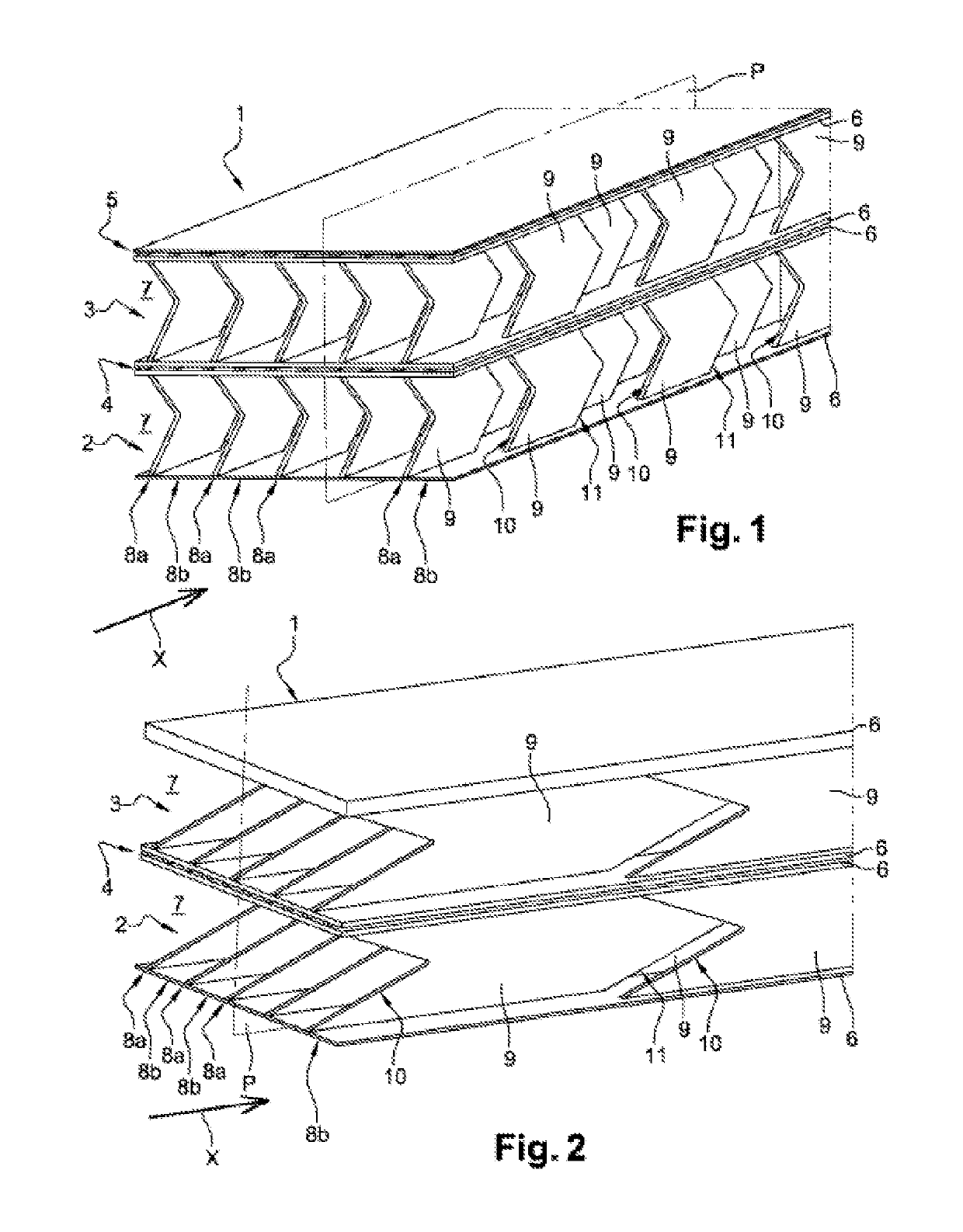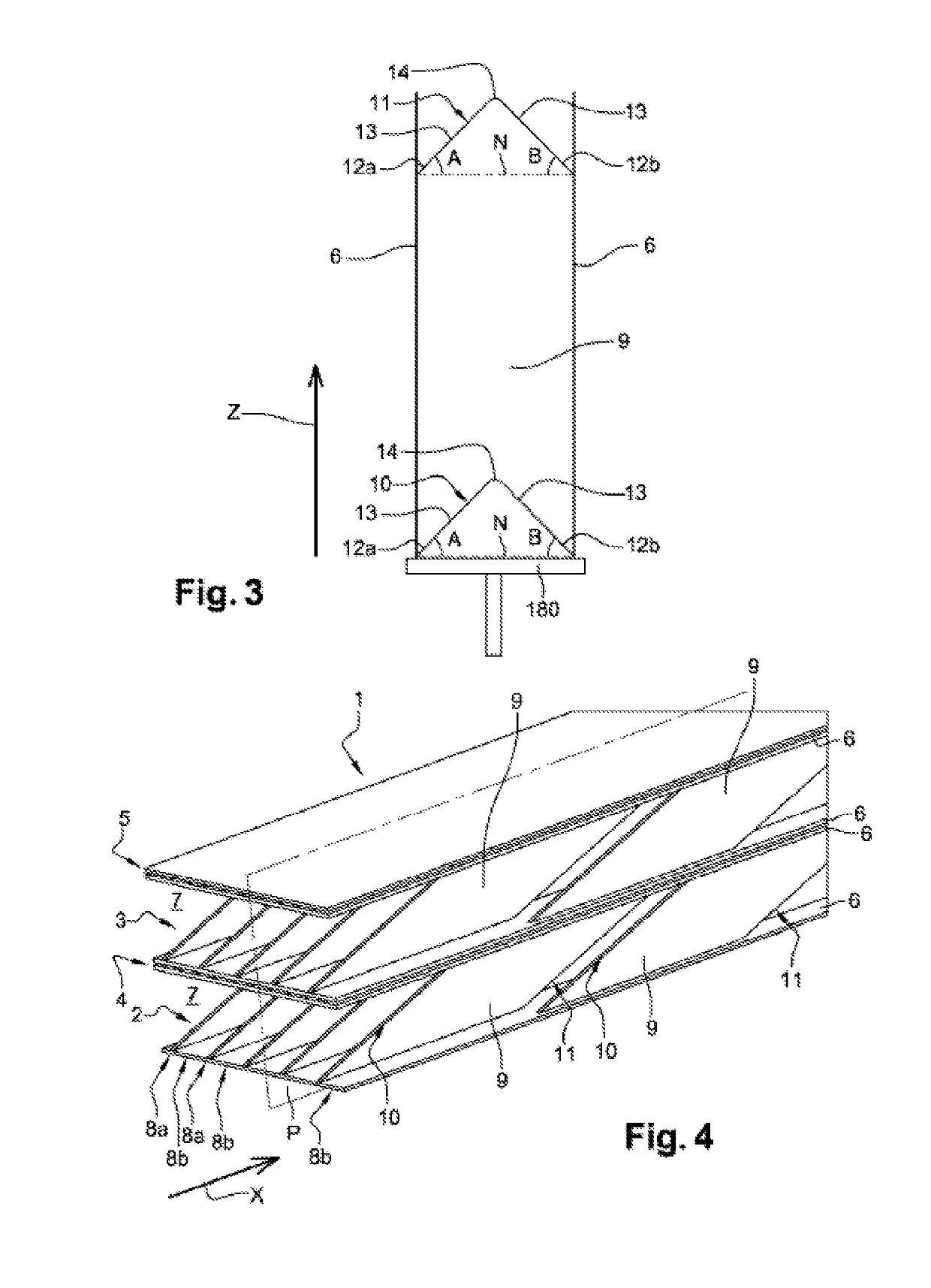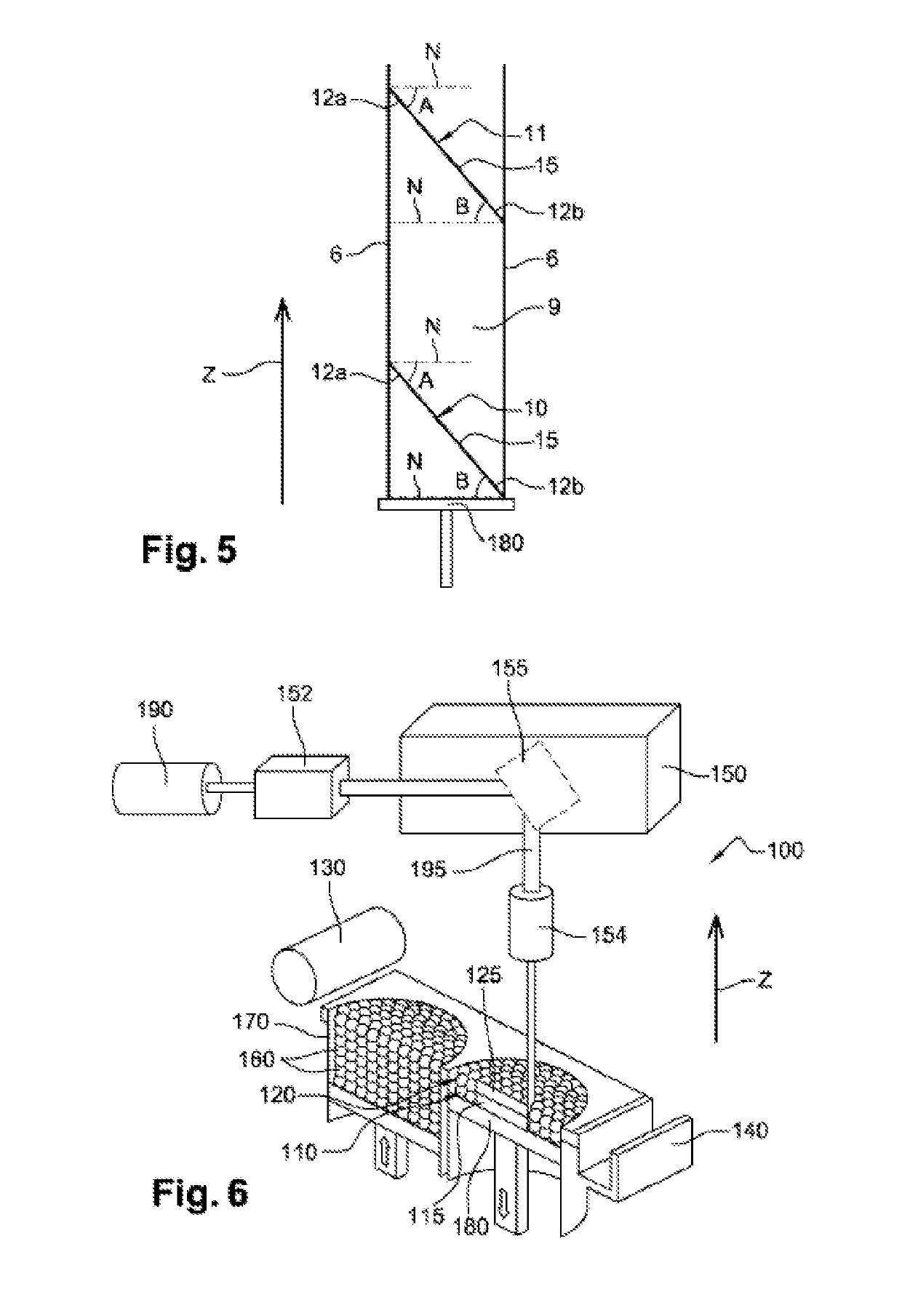Heat exchanger
a technology of heat exchanger and heat exchanger plate, which is applied in the direction of lighting and heating apparatus, turbines, manufacturing tools, etc., can solve the problems of significant mechanical energy loss of the first fluid, construction that cannot meet the dimensional and geometric tolerances required for manufacturing, and production difficulties
- Summary
- Abstract
- Description
- Claims
- Application Information
AI Technical Summary
Benefits of technology
Problems solved by technology
Method used
Image
Examples
first embodiment
[0031]FIGS. 1 and 2 are perspective views of a heat exchanger (with two stages) according to the invention, each stage comprising two plates and a plurality of rows of fins arranged between the plates, ;
[0032]FIG. 3 is a detailed view of a fin of the heat exchanger of FIGS. 1 and 2, in a plane P;
second embodiment
[0033]FIG. 4 is a perspective view of a heat exchanger, ;
[0034]FIG. 5 is a detailed view of a fin of the heat exchanger of FIG. 4, in a plane P;
[0035]FIG. 6 is a schematic view of a machine for producing an exchanger (or an exchanger stage) according to the invention, by additive manufacturing;
[0036]FIGS. 7 to 10 are detailed views, in a plane P, similar to those of FIGS. 3 to 5, and illustrate embodiment variants of the fins according to the invention.
DETAILED DESCRIPTION
[0037]In FIGS. 1 and 2, a heat exchanger 1 between a first fluid (for example, hot exhaust gases) flowing in a longitudinal direction X and a second fluid (for example, air) is represented.
[0038]More specifically, the exchanger 1 is staged, namely a first and a second stage 2, 3 for circulating the first fluid. A first path 4 for circulating the second fluid is arranged between the first and second stages 2, 3 (inter-stage circulation path). A second path 5 for circulating the second fluid (not represented in FIG. ...
third embodiment
[0074] represented in FIG. 9, for each fin 9, in a plane P, the first edge 10 comprises one single concave elliptical section 21. The elliptical section 21 corresponds to an elliptical section having an angle at the centre substantially equal to 90° (quarter of an ellipsis) and is connected to one of the plates 6 via a fillet 22 (concave shape).
PUM
| Property | Measurement | Unit |
|---|---|---|
| angle | aaaaa | aaaaa |
| angle | aaaaa | aaaaa |
| angle | aaaaa | aaaaa |
Abstract
Description
Claims
Application Information
 Login to View More
Login to View More - R&D
- Intellectual Property
- Life Sciences
- Materials
- Tech Scout
- Unparalleled Data Quality
- Higher Quality Content
- 60% Fewer Hallucinations
Browse by: Latest US Patents, China's latest patents, Technical Efficacy Thesaurus, Application Domain, Technology Topic, Popular Technical Reports.
© 2025 PatSnap. All rights reserved.Legal|Privacy policy|Modern Slavery Act Transparency Statement|Sitemap|About US| Contact US: help@patsnap.com



